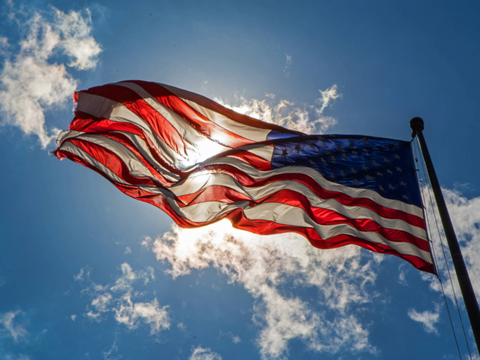
With a number of seismic shifts changing the economic landscape of the United States, how are American businesses navigating sustainable progress? Olga Kachook, director of the Sustainable Packaging Coalition, provides an overview of how different sectors are engaging with materials, formats, certification, and infrastructure in light of new tariffs, stripped-back funding, and more.
As US companies grapple with growing packaging policy mandates and material trade or tariff uncertainties, companies that innovate to prioritize reuse, the right materials, recyclability, and material health will shape the packaging landscape of tomorrow.
In the American sustainable packaging industry, it might be time to call it like it is. Despite decades of work, certain materials still haven’t measurably improved their recyclability, reuse and refill has moved at a snail’s pace, and efforts to source recycled content have stalled. Now there’s a new set of variables in the mix: Our capacity to focus on these solutions is increasingly diminished by the chaos around us.
The U.S., in some ways, feels like the epicenter of chaos. In addition to ping-ponging tariffs, looming recession threats, and federal spending cuts across sustainability and climate work, in 2025 the U.S. saw two new Extended Producer Responsibility (EPR) bills pass in the states of Maryland and Washington. With seven states now in various stages of EPR implementation, deciphering how this patchwork of policies will impact packaging portfolios is no small feat.
So where do we go from here? Weathering multiple global storms, the companies that will succeed over the next five years will be the ones that radically innovate their business models and re-examine their material choices.
The companies embracing the four trends below, first showcased in the SPC’s recent Sustainable Packaging Trends Report, show that sustainable packaging’s future hinges on innovating our way out of uncertainty.
Companies as diverse as Google, Home Depot, and Duracell are showing us that the future of sustainable packaging is material-specific
For years, goals around packaging sustainability notably lacked stated preferences for specific materials used in packaging. Ever since the 2018 New Plastics Economy Global Commitment, goals focused on 100% recoverable packaging, not plastic-free packaging.
But the need to stay relevant in the face of consumer sentiment and global treaties has led companies to set — and meet — material-specific sustainability goals. The most high-profile example of this was Google’s plastic-free by 2025 packaging goal.
In the U.S., brands like Duracell and Energizer have followed suit, launching plastic-free packaging, and retailers like Home Depot have “purged” their portfolio’s materials on the U.S. Plastic Pact’s list of “problematic materials.”
Sustainability alone won’t drive this shift. Tariffs and trade wars could prompt more and more companies to outline what materials they will or won’t allow in their portfolio.
Los Arcos and Kiehl’s prove that refills are making a comeback for spirits and beauty
How might reusable packaging help companies dodge some of the uncertainty around EPR fees? Brands are starting to focus on reuse and refill in the categories where it makes the most sense. Categories like spirits, especially in the B2B context, have seen noteworthy reuse logistics and service providers like ecoSPIRITS working with companies on returnable, packaging-as-an-asset business models.
For example, Miami, Florida-based Los Arcos has its premium agave transported in bulk and delivered to hospitality venues in reusable glass ecoTOTE containers, like beer kegs. With a heavyweight material like glass, opting out of single-use and into reusable models could save brands hundreds of thousands of dollars in EPR fees.
For the high-use beauty space, refills can help cut inflation-driven costs while reducing a brand’s material usage. New York-based Kiehl’s has been encouraging consumers to opt for refillable formats with a new campaign, “Don’t Rebuy. Just Refill.”
As material health takes the stage in US policy, food serviceware companies show how to demonstrate safety
The U.S. has been late to the game when it comes to the health and safety of packaging, but 2025’s proposed and passed legislation are quickly helping states catch up. Some of these bills included restrictions on a whole slew of chemicals of concern, including components that contain ortho-phthalates, bisphenols, and formaldehyde, among others.
In response, innovation through certification seems to be the path forward. EcoProducts and Sabert, both U.S.-based food serviceware manufacturers, are getting ahead of the trend with their GreenScreen certification. This kind of third-party assessment and certification demonstrates the safety of their packaging portfolio while de-risking it against the growth of these chemicals-related packaging policy bills.
Filling the gap in municipal recycling programs, Alaska Airlines and the NBA are working with specialized recyclers
In a world where the list of hard-to-recycle packaging items is long, specialty recyclers are making sure that films, pouches, wrappers, and bread bag closures are no longer quite so hard to recycle. These recyclers make it easy for consumers — and companies — to find collection methods for materials that can’t be recycled curbside in the U.S.
Earlier this spring, NBA fans got free Trashie’s Take Back Bags, loaded them up, and mailed them off with up to 15 pounds of old clothing, shoes, and sports gear in exchange for major discounts and the chance to win tickets to the 2025 NBA draft. These kinds of high-value incentives are key to ensuring widespread consumer participation.
Meanwhile, flight attendants on Alaska Airlines have led the in-flight effort to collect snack packaging (think: peanuts and pretzels) in specially designed Ridwell bags. Ridwell, a specialty recycler with operations in nearly a dozen major U.S. metropolitan areas, started out by offering alternative pickup services for consumers. Now, their efforts to find transparent, traceable end markets for hard-to-recycle items are an asset to companies working on hitting their 100% goals.
When chaos strikes, innovations will determine who thrives
Innovation is the necessary response to chaos. In the U.S. and across the world, embracing key policy, material, and business model trends is equally useful for helping companies weather global storms and making meaningful progress on their sustainability goals.
If you liked this story, you might also enjoy:
The ultimate guide to the Packaging and Packaging Waste Regulation in 2025
How are the top brands progressing on packaging sustainability?
Everything you need to know about global packaging sustainability regulation in 2025
The key to increasing the use of reusable packaging in supermarkets

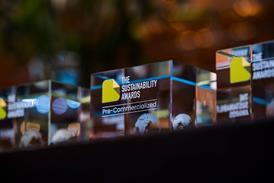

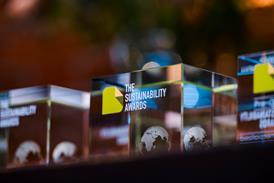
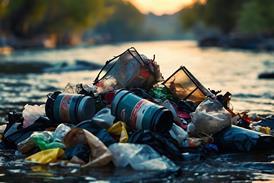
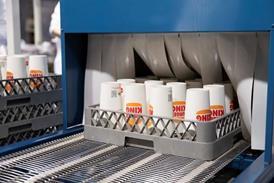












No comments yet